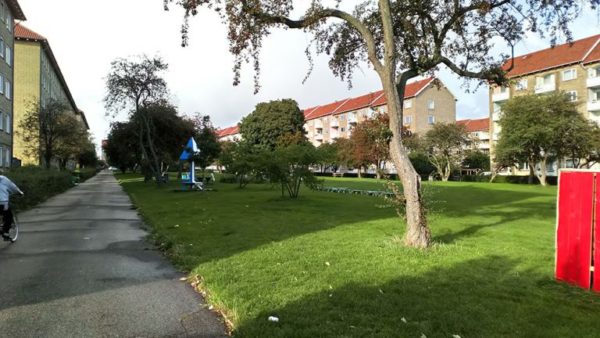Socially smart cities: Making a difference in urban neighbourhoods
This blog by Alison Gilchrist, written as the Smart Urban Intermediaries – Trans-European Research, Learning and Action project draws to an end, outlines some of its key findings. This blog has been reposted from the project website: a series of short films, blogs and two end-of-project publications also provide more details on the research.

The ‘smart cities’ movement has emphasised the contribution that technologies can make to tackling complex problems at the interface between urban institutions and the people who live and work in cities. Policy and funding has directed attention to issues such as traffic movement, air quality, social care provision, public participation, etc. within complex systems of micro-decision making and service delivery that need smooth and speedy co-ordination of demand and response. Using online or artificial intelligence, smart city models harness the latest technological developments to integrate information across a range of sources and to mobilise big data to broker diverse interests and deliver services on the ground. But this is not enough to solve the major challenges facing many urban neighbourhoods.
Recent research in four northern European cities has revealed the crucial role played by ‘socially smart’ individuals working to improve life for the residents of challenging, but vibrant, neighbourhoods. These ‘smart urban intermediaries’ (SUIs) work with communities to devise ‘win-win’ strategies that tackle problems that both public authorities and private market forces find difficult to address.
The research team worked closely with forty individuals over nearly two years: observing their practice, exploring motivations and reflecting on some of the factors that enabled or obstructed their work. In many ways the SUIs are all different, with different motives and approaches, tailored to different times and circumstances. Nonetheless, they do have common practices and traits. The project compared experiences in similar neighbourhoods and found remarkable overlaps between how the smart urban intermediaries operate and what drives their commitment to social progress. Most have dedicated many years to improving the lives of the most disadvantaged residents of specific areas. Two examples illustrate the courage and creativity of SUIs, using their networks to assemble the people and resources needed to improve life for residents.
In Copenhagen, a brave tenant led a campaign to rid her area of gangs openly dealing drugs and using knives and guns to threaten anyone who got in their way. She mobilised her neighbours through street protests and organised community actions to reclaim community spaces. The group also lobbied the police and city mayor to take more responsibility and to help residents to defend the neighbourhood against criminal activities.
Health problems among the Asian communities in Birmingham have caused concern for many years. A local initiative, the Saheli hub led by a community worker, has developed a range of fitness and adventure activities for women of all backgrounds to try out new experiences and challenges, such as cycling, running and kayaking.
The SUIs are passionate about improving life for their neighbours and challenging social injustices. They nurture social relations and use these to bring together ideas, assets and expertise to develop projects that meet local needs and aspirations. This is possible because the smart urban intermediaries are trusted and respected. They invest time and effort in a web of connections with people who can provide advice, encouragement and practical help, often for free or very little financial cost. By working across sectors, traditional policy and institutional divisions, SUIs can be innovative, but sometimes struggle to maintain momentum because funding runs out, volunteers move on or they themselves experience ‘burn out’.
So, how can this vital, but hidden, role of SUIs be supported? Policy-makers and funders might better recognise and respect their contribution to neighbourhood life. They might help to sustain the work of SUIs who are valued locally but struggle to make ends meet. And finally, they might invest in cross-sectoral initiatives that renew and align what is out there already. Smart cities rely on the latest technologies to enhance services and transform infrastructure. They also need socially smart urban intermediaries who understand local conditions and can spark community action around specific issues. Until that connection is made, smart city strategies will have a people-shaped void at their centre.
More information about the project and its findings is available in two recently published reports: Socially smart cities: Making a difference in urban neighbourhoods and Social transformation in urban neighbourhoods: Supporting smart urban intermediation.